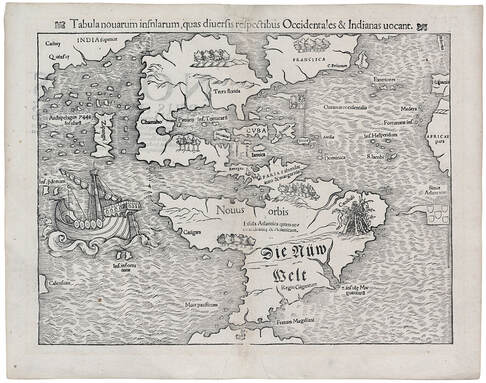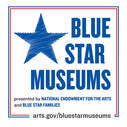Sebastian Munster
Tabula novarum insularum ...
Basel 1544
Tabula novarum insularum ...
Basel 1544
This rare woodcut is the earliest map of America and the Western Hemisphere of any note (1). The outline is remarkably accurate considering its early date, but its wide distribution and general influence helped to perpetuate the myth of the false Sea of Verrazzano.
In his voyage of 1524, Verrazzano, sailing along the Outer Banks of North Carolina, believed that he could see the Pacific Ocean in the distance across what is now known as Pamlico Sound. This mistake is reflected in the very narrow neck of land between Terra Florida and Francisca visible on this map. The West Indies are correctly shown, as is the eastern side of South America, but the Pacific coasts, especially the North Pacific, which had not yet been explored, are guesswork. Because of a common miscalculation of the circumference of the Earth, Zipangri (Japan) is shown off the coast of California. Of particular interest is a body of water at the northern edge of the American continent suggesting what would later be known as the Northwest Passage. Also of interest, at this very early date, is the separation of the North American continent and the Asian continent, which is labeled on the this map as India superior and Cathay, by a passage of, as yet unnamed, open water.
(1) Phillip D. Burden, The Mapping of North America (Rickmansworth, England: Raleigh, 1996), 17.
NEXT MAP
In his voyage of 1524, Verrazzano, sailing along the Outer Banks of North Carolina, believed that he could see the Pacific Ocean in the distance across what is now known as Pamlico Sound. This mistake is reflected in the very narrow neck of land between Terra Florida and Francisca visible on this map. The West Indies are correctly shown, as is the eastern side of South America, but the Pacific coasts, especially the North Pacific, which had not yet been explored, are guesswork. Because of a common miscalculation of the circumference of the Earth, Zipangri (Japan) is shown off the coast of California. Of particular interest is a body of water at the northern edge of the American continent suggesting what would later be known as the Northwest Passage. Also of interest, at this very early date, is the separation of the North American continent and the Asian continent, which is labeled on the this map as India superior and Cathay, by a passage of, as yet unnamed, open water.
(1) Phillip D. Burden, The Mapping of North America (Rickmansworth, England: Raleigh, 1996), 17.
NEXT MAP






